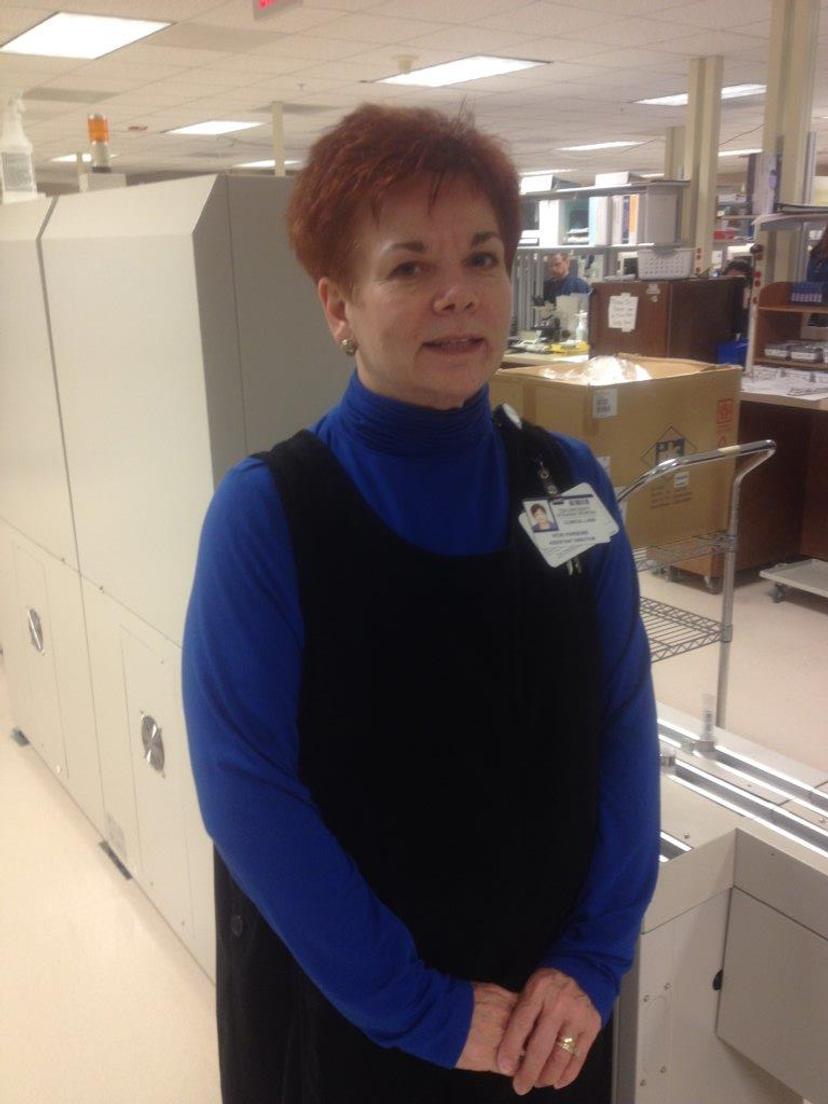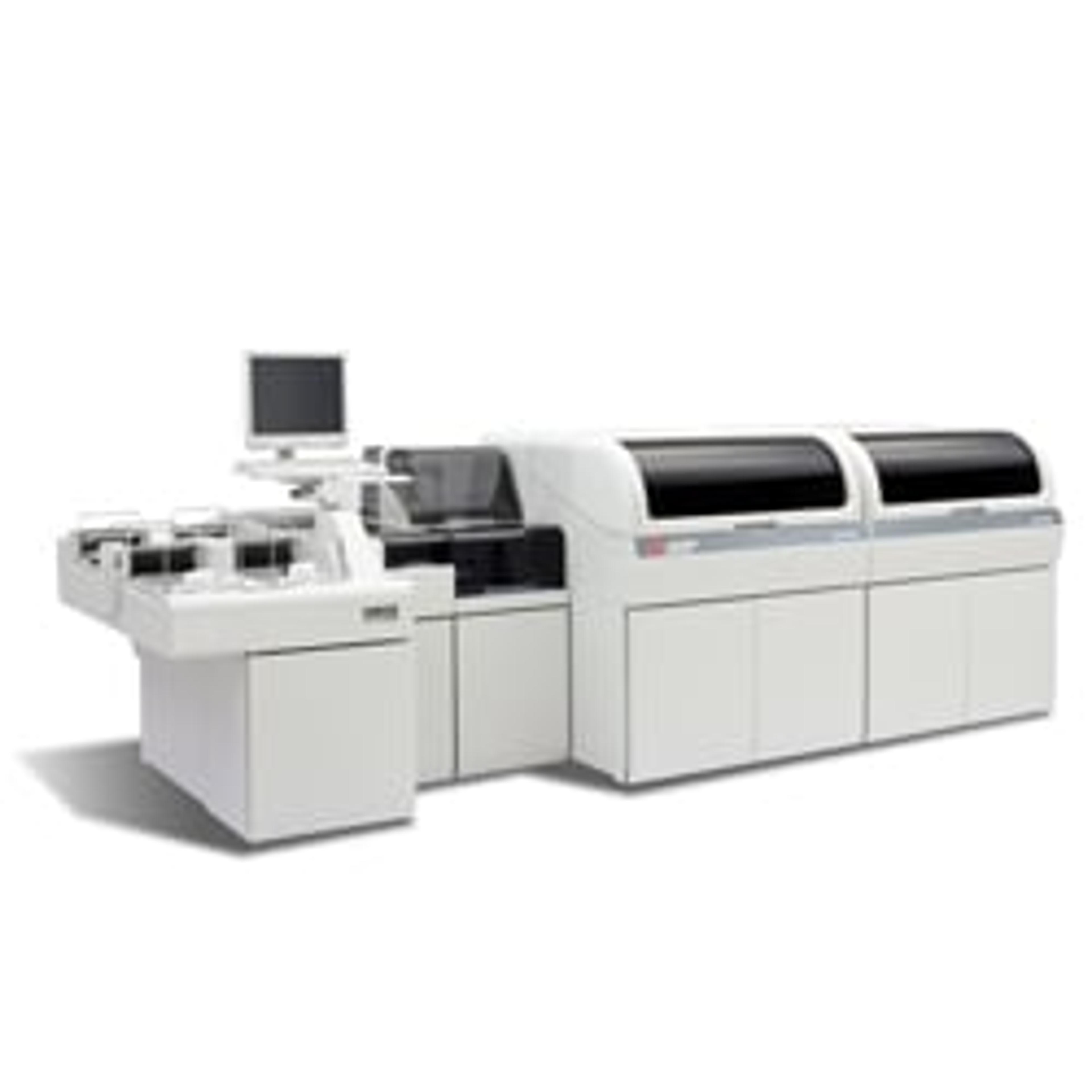How We Upgraded Our Core Lab Automation System
Vicki Parsons, of University of Kansas Hospital, talks to Sonia Nicholas
14 Apr 2015
Vicki Parsons is Assistant Director of Pathology and Laboratory Medicine at The University of Kansas Hospital The University of Kansas Medical Center

The University of Kansas Hospital is the region's premier academic medical center, providing a full range of care. The hospital is affiliated with the University of Kansas Schools of Medicine, Nursing and Health Professions, and their various leading-edge research projects. The constantly growing facility contains 683 staffed beds (plus 24 bassinets) and serves more than 31,000 inpatients annually.
Prior to automation, the lab staff manually spun samples and manually verified results. Automation brings calmness to the lab!
Vicki Parsons The University of Kansas Hospital
The University of Kansas Hospital, USA, recently upgraded its core lab automation system. Learning from the experience of laboratories such as this is one of the best ways of preparing to undertake the upgrade yourself. I spoke to Vicki Parsons, MT (ASCP) SH, Assistant Director of Pathology and Laboratory Medicine at the University of Kansas Hospital, to find out what effects the installation has had on the laboratory.
SN: Can you give us an idea of how busy your department is?
VP: We have 650 beds, a Cancer Center and five Community Cancer Centers. Our Lab carries out 2.8 million billed tests; 1.98 million of those tests are done in our Core Lab (Chemistry and Hematology).
SN: Why did you decide to upgrade your lab system?
VP: We have had a Beckman Coulter Automation line since 2003 – we have both a hematology and chemistry line. Our chemistry line had: Prep Link, Remisol Advance, Dynamic Inlet, 1 Centrifuge, Aliquoter, 2 DxC 800s, 2 DxIs, 3K Stockyard. But we were having trouble keeping up with volume and decided that we needed more capacity.
SN: What changes did you decide to make to the existing system?
VP: We upgraded our Power Processor – adding a second centrifuge, a 5K stockyard. We replaced the DxC 800s with 2 AU5822s and a AU680. Our current chemistry line: Prep Link, Remisol Advance, Dynamic Inlet, 2 Centrifuges, Aliquoter, 2 AU5822s, 1 AU680, 2 DxIs, 5K Stockyard.
SN: Why did you decide to install this particular automation line?
VP: The AUs gave us increased capacity – we can put many more samples through the system. There are many things about the Beckman Coulter automation line that aren’t available with other systems:
- The centrifugation process is very quick.
- Prep Link manages samples based on test menu and instrument availability. It is easy to ‘share’ a sample between two instruments. And, if an assay isn’t available, Prep Link sends the sample to storage and when the test becomes available, sends the sample to the instrument.
- Add-on requests are managed by the automation line. Our front-end staff add the new test to the existing sample and the automation line pulls the sample and sends it to the instrument with no intervention from the staff.
- We use Remisol Advance to manage results – that is where our autovalidation rules reside. The system is easy to use and we can make changes as they are needed to optimize workflow.
SN: How did you find the whole installation process?
VP: It’s never easy. Since we have had automation for so long, taking the system down for the upgrade was painful. We have to manually centrifuge, aliquot sendout tests, load instruments, move shared samples and manage samples post testing. It’s always a good reminder of how much we appreciate the automation line. We still have Remisol so result management was not affected. Also, the AU5822s were new so everyone was on a learning curve. The Beckman Coulter staff did everything in their power to make it easier for the staff and they were very responsive when issues came up. We can look back now and say we got through it and it was worth the pain.
SN: How did your staff adapt to the new processing system?
VP: They were glad to have it back! They appreciate the fast AUs, the second centrifuge, and the larger stockyard. he AU rack builder is different from the DxI connection, but it is fast and very efficient. The AU reagent loading/QC process was different but we worked with Beckman Coulter to streamline and it is now part of the routine workflow.
SN: Since the installation of the new equipment, how has daily life in the lab changed? Has it had an effect on turnaround times, the use of staff time on pre-analytical procedures, and efficiency?
VP: These changes really happened in 2003 for us. Automation and autovalidation have helped us improve TAT. The aliquoter assures that samples get where they are needed – to the send out area and to instruments that are not connected to the line. Prior to automation, the lab staff manually spun samples, manually verified results (looking at each result), looked for samples when tests were added on, pretreated samples for lipids and iron, and prediluted urine chemistries with a different dilution/diluent for each analyte. Automation brings calmness to the lab – the staff are only managing sample/result exceptions and the instrument reagents and QC.
SN: Do you have any advice for laboratory managers who are considering the installation of a new automation system?
VP: Make sure that the system matches the needs of your laboratory. They all have different strengths and weaknesses. Visit a lab that is similar to yours where the system is in use. Validate expectations.

